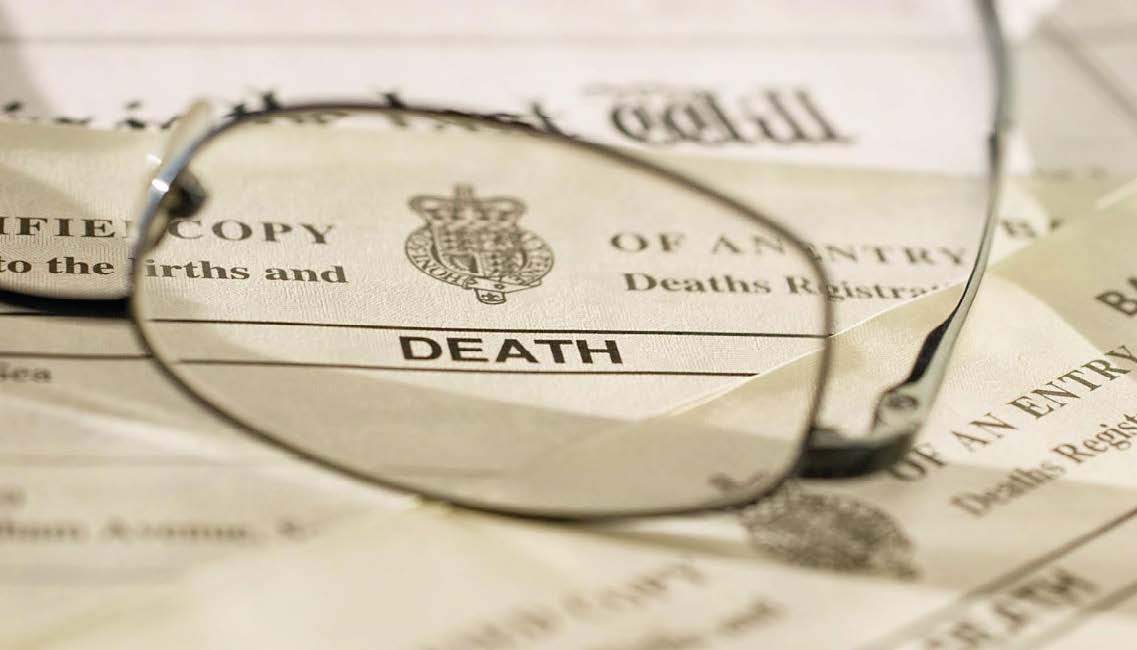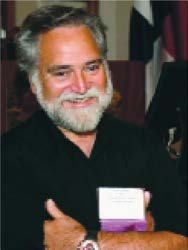ANCORA IMPARO
RICK RADER, MD ■ EDITOR-IN-CHIEF

A LOST CAUSE: While an individual's life should not be identified, demarcated or described by their disability, the death certificate is not the place where their value, contribution and significance is remembered and shared.
Stopped Living As a Cause of Death
Beyond the "birth certificate," and the "death certificate," we have the "life certificate." A timeless affidavit that describes the "cause of life" and how that individual enhanced, improved and elevated the lives he or she came into contact with.
The poet Emily Dickinson remarked that "Dying is a wild night and a new road."
And while that might be up for debate, neither a "wild night" nor a "new road" has ever appeared as the cause of death on a death certificate.
While it might be obvious, Sam Tetrault, writing in The Cake Library, makes it clear. "A death certificate is a legal document used by the state and federal government to prove someone has died." It may be among one of the most important legal documents in our modern world, but has only become common practice when the U.S. began maintaining vital records in the early 1900s. Over time, death certificates have expanded to include more information, such as how someone died, their ethnicity, and so on. In addition, public health officials use death certificates for research and statistics. This is how they determine the leading causes of death today and in the past. These records are valuable not only for handling someone's legal affairs, but also for family ancestry, research, and healthcare. Each state is required to comply with the U.S. Standard Death Certificate, a form issued by the Centers for Disease Control and Prevention's National Center for Health Statistics (NCHS).
According to the National Association of Medical Examiners, the manner of death designation is an "American invention" that was added to the U.S. Standard Certificate of Death by public health officials in 1910, primarily to assist in clarifying the circumstances of death and to help those who "code and classify cause-of-death information from death certificates for statistical purpose. The options are Natural; Accident; Suicide; Homicide; and Undetermined/ Cannot be Determined."
Historically, death records were kept by local churches along with baptism and marriage records. The Massachusetts Bay Colony in 1639 was the first American institution to have the secular courts keep these records. In the early days of death certificates, the cause of death may have simply indicated the nature of the illness prior to death, not the exact cause of death. As medical care has evolved, we no longer see the cause of death recorded as "child bed fever," "St. Anthony's Fire," "dropsy," "vapours," "miasmata" (foul odors from the earth), "ships fever" or "quinsy" (tonsillitis).
A review of causes of death reveal that some are described with hyper-specificity, and other times with puzzling vagueness. Take for example 951 deaths attributed to "contact with powered lawnmowers;" 2,167 deaths due to "constipation;" over 1,800 deaths due to being "caught, crushed, jammed or pinched in or between objects;" "fall involving a bed:" 10,386 deaths; that's almost 2,000 more deaths than those from a "fall from, out of or through building or structure."
Of particular concern are the numerous errors in recording the cause and manner of death on death certificates and how they affect families, mortality statistics, and public health research.
Research studies have demonstrated that upwards of 53% had errors in accurately reporting the cause of death. There was no significant difference by the physician's spe cialty. Certificates for deaths occurring in hospitals were more likely to have major errors than certificates for deaths occurring at a private residence. Clearly, the medical profession must fortify its training in the proper and appropriate use of death certificates.
Unfortunately, we still see "mental retardation" cited as the cause of death on many death certificates. It is important to capture a person's underlying disability, even if it did not directly contribute to their death. While one can debate the idea that people with disabilities die directly from their disability, or as a consequence of the disability, having that information can impact on the way we view, treat and value them. The information can be employed in research, prevention, disparities, funding and health equity.
DISABILITY STATUS IS NOT A RECOGNIZED COMPONENT OF MORTALITY DATA IN THIS COUNTRY!
The U.S. Standard Certificate of Death contains fields for a limited degree of personal information that the funeral director is responsible for filling in with information derived from an "informant" (usually a relative). These fields include age/date of birth, sex, race, length of residence in a county/state, whether someone has served in the armed forces, marital status, and occupation at time of death, names of spouse and/or parents, level of educational attainment, and the informant's name. There is no space for recording disability status as a demographic characteristic of a deceased person. The middle "cause of death" section on the certificate must be filled out by the person who pronounces or certifies death, usually a medical examiner or coroner. This section requires an "under"It is important to capture a person's underlying disability, even if it did not directly contribute to their death." lying cause of death" and has room for "conditions, if any, "conditions, if any, leading to" the primary cause of death, as well as "other significant conditions contributing to death but not resulting in the underlying cause."
Because disability status as a demographic fact is not required or even asked on death certificates, it has been extremely difficult to establish even the bare fact of how many people with disabilities died from COVID-19. (Institute for Health Metrics and Evaluation, University of Washington).
And while an individual's life should not be identified, demarcated or described by their disability, the death certificate is not the place where their value, contribution and significance is remembered and shared. Beyond the "birth certificate," and the "death certificate," we have the "life certificate." A timeless affidavit that describes the "cause of life" and how that individual enhanced, improved and elevated the lives he or she came into contact with. Maybe it's time to say "rest in peace" to death certificates that fail to portray information that may matter most.•
ANCORA IMPARO

In his 87th year, the artist Michelangelo (1475 -1564) is believed to have said "Ancora imparo" (I am still learning). Hence, the name for my monthly observations and comments. – Rick Rader, MD, Editor-in-Chief, EP Magazine Director, Morton J. Kent Habilitation Center Orange Grove Center, Chattanooga, TN